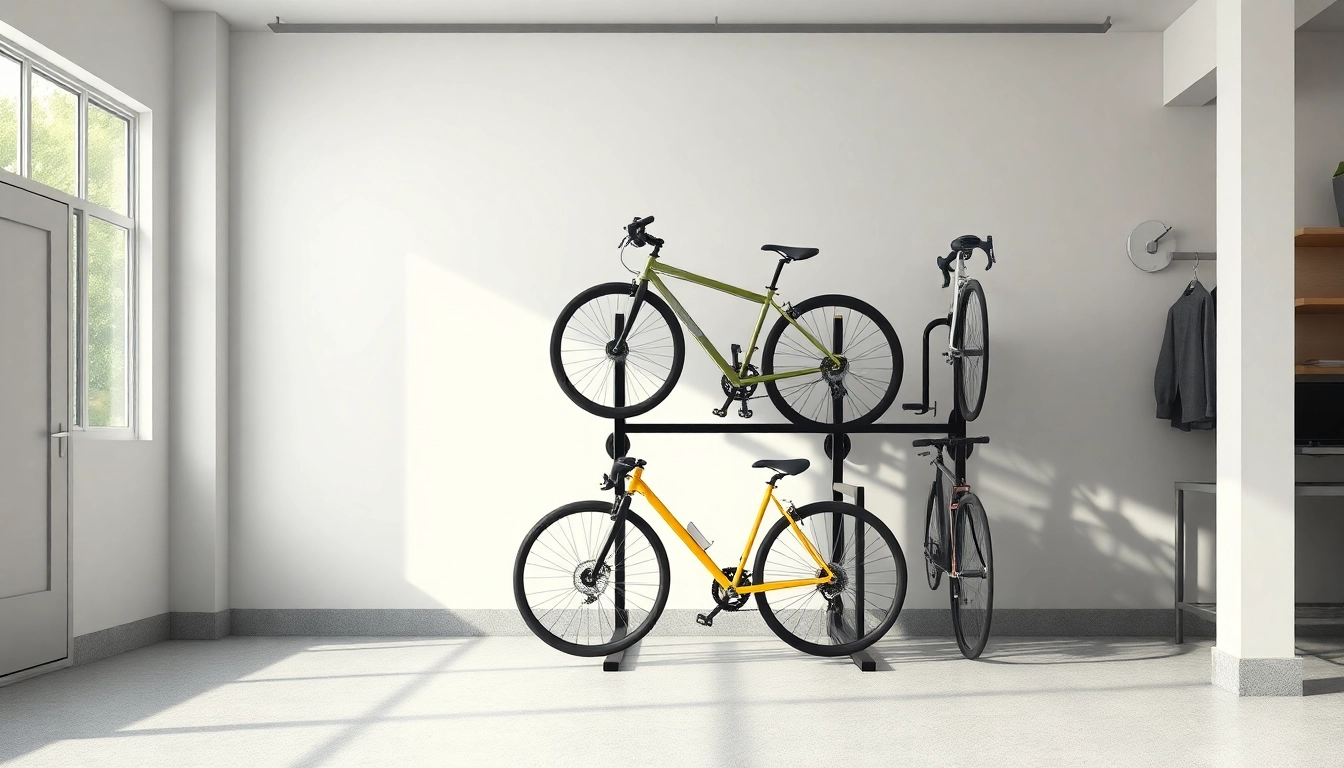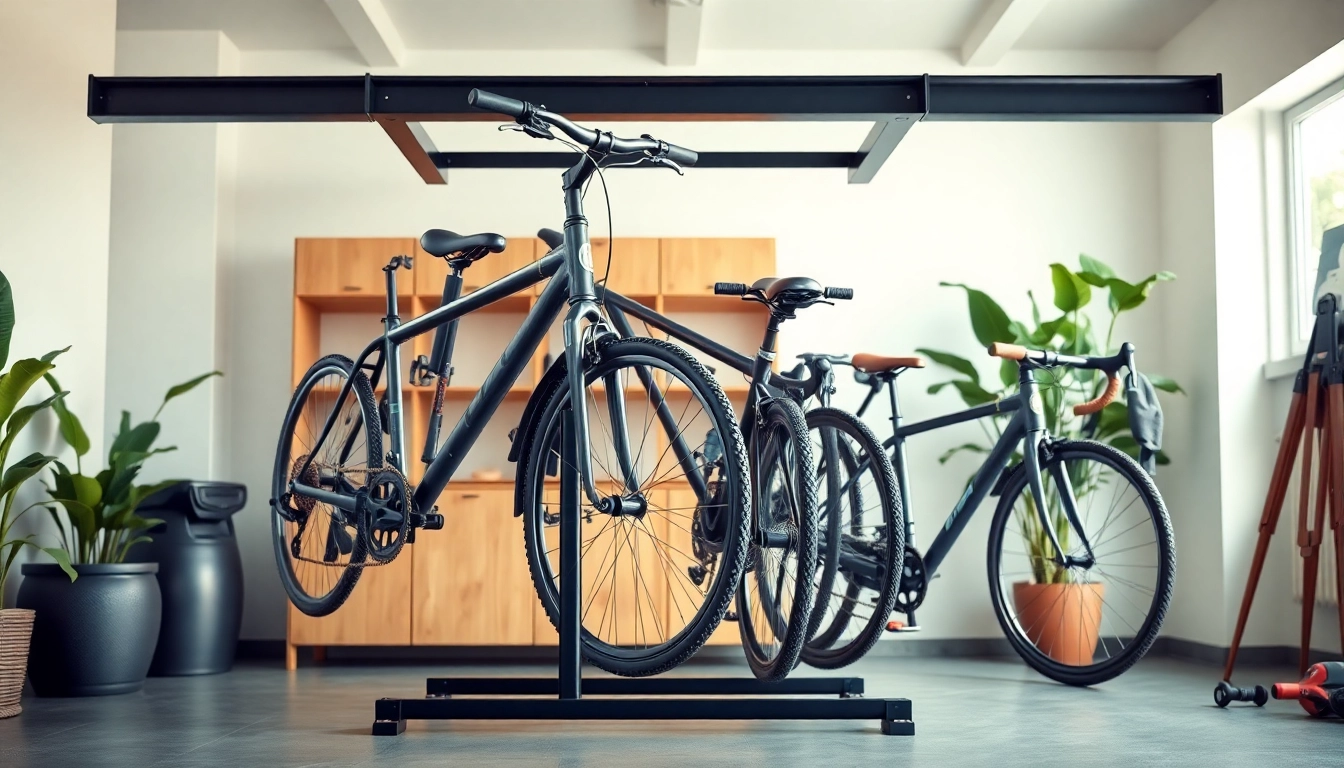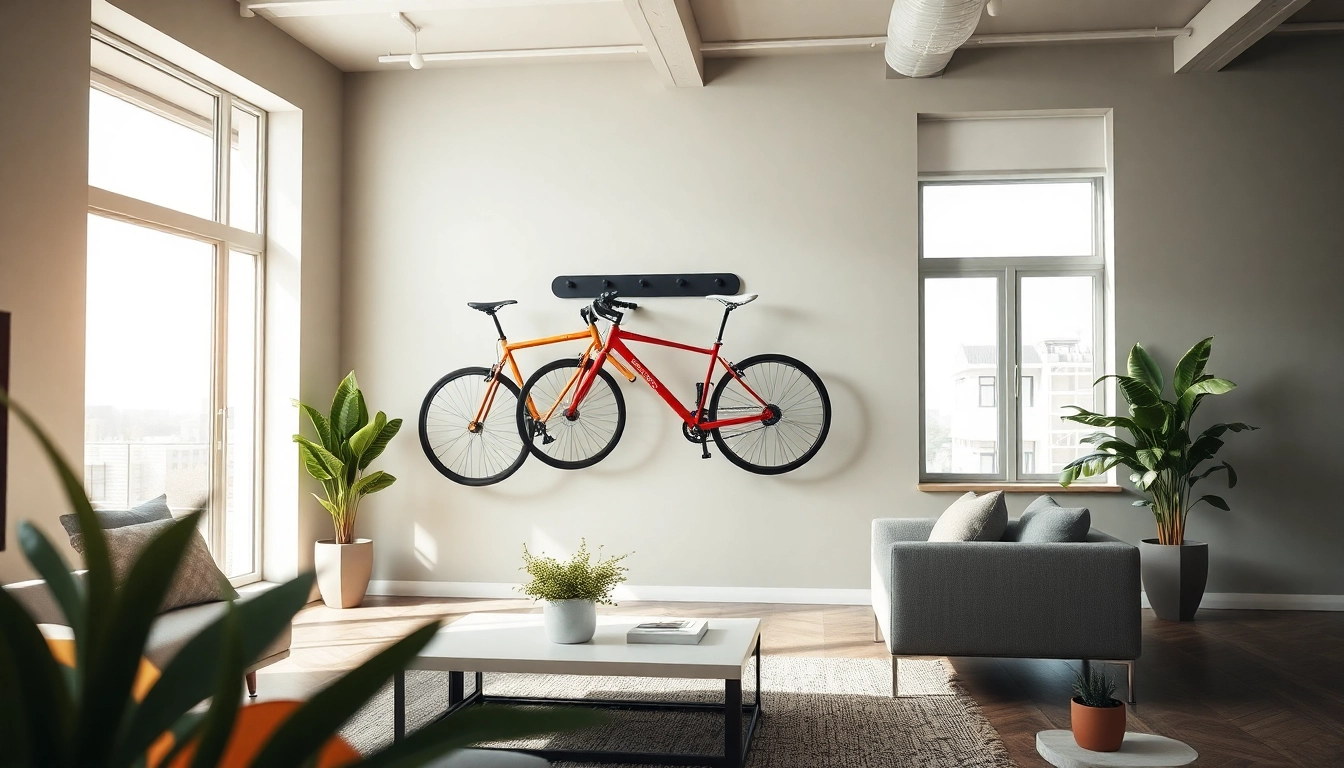Understanding Space-saving Bike Rack Designs
With the rising popularity of cycling, many homeowners are confronted with the challenge of storing their bikes in limited spaces. A Space-saving bike rack offers an effective solution, allowing individuals to store bikes securely while maximizing floor space. This article delves into the various types, features, and designs of space-saving bike racks to help you choose the best option for your needs.
Types of Space-saving Bike Racks
Space-saving bike racks come in various designs, each suited to different needs and environments. Here are the primary types:
- Wall-Mounted Racks: These racks attach directly to the wall, allowing bikes to be stored vertically or horizontally. This option saves floor space and keeps bikes out of the way.
- Freestanding Racks: Ideal for locations without wall access, freestanding racks offer stable storage without the need for installation. These racks work well in garages or rented spaces.
- Ceiling-Mounted Racks: By utilizing overhead space, ceiling-mounted racks hoist bikes out of sight, freeing up floor space and making room for other items.
- Vertical Racks: Similar to wall-mounted racks but designed to hold bikes upright. This style can accommodate multiple bikes in a narrow footprint.
- Foldable Racks: These innovative racks can be folded away when not in use, making them a great option for small spaces that require occasional bike storage.
Key Features to Look For
When selecting a space-saving bike rack, it’s crucial to consider certain features that can enhance usability and security:
- Weight Capacity: Ensure the rack can support the weight of your bike or bikes without risk of damage or collapse.
- Ease of Access: Choose designs that allow for easy loading and unloading of bikes without struggle or hassle.
- Durability: Look for racks made from high-quality materials that can withstand wear and tear from regular use.
- Adjustability: Some bike racks offer adjustable features to accommodate different bike sizes and styles, providing flexibility in storage options.
- Security Features: Integrated locks or security systems prevent theft, especially when storing bikes in public or shared spaces.
Comparing Vertical vs. Horizontal Storage Options
Choosing between vertical and horizontal storage options depends on your available space and preferences. Vertical racks typically save more horizontal floor space and are a favorable choice for narrow areas, while horizontal storage may be easier for frequent access. Consider your specific needs, including bike frequency of use and available space, to make the best choice.
Benefits of Using a Space-saving Bike Rack
Employing a space-saving bike rack can significantly enhance the functionality of your home or garage. Here are some benefits:
Maximizing Floor Space in Your Home
Space can be a premium in many homes, especially in urban landscapes. Utilizing a space-saving bike rack enables you to reclaim valuable floor space. By storing bikes vertically or using wall-mounted solutions, you can maintain an organized area without clutter. This approach allows you to use the freed-up space for additional storage or activities, enhancing your home’s overall functionality.
Enhancing Bike Protection and Accessibility
A dedicated bike rack protects your bicycles from damage, dirt, and theft. When bikes are stored properly, they are less susceptible to scratches, dents, and exposure to the elements. Furthermore, organized storage means easier access to your bikes whenever you want to ride. This accessibility encourages more frequent use, promoting a healthy lifestyle.
Cost-Effective Storage Solutions
Investing in a space-saving bike rack can save money in the long run. By organizing your biking gear and accessories neatly, you reduce the likelihood of damage or loss, which can be costly. Additionally, effective storage solutions can prevent the need for additional storage units, further saving you expenses.
How to Choose the Right Space-saving Bike Rack for Your Needs
Selecting an appropriate bike rack involves careful consideration of several factors. Here are steps to help guide your decision:
Assessing Your Available Space
Begin by evaluating the physical space where you plan to store your bike. Measure the area to determine the dimensions available for a rack. Consider ceilings if opting for vertical storage and check whether walls can accommodate a mount. Ensuring there is enough clearance and that you have access to electrical outlets (if applicable) will help you avoid future installation complications.
Understanding Different Bike Types and Sizes
Not all bikes are created equal, and understanding the types—such as mountain bikes, road bikes, or hybrids—can affect your storage choice. Different models also vary in frame size and weight, impacting which rack features are important to you. Ensure the selected rack can accommodate the specific needs of your bikes, including weight and size.
Budgeting for Quality Bike Racks
While many affordable options exist, investing in a high-quality rack can provide safety and durability. Set a budget that considers both initial costs and potential future expenses related to repairs or replacements. Remember that a well-constructed bike rack can be a long-term solution, ultimately offering greater value for money.
Installation Tips for Your Space-saving Bike Rack
Tools and Materials Required
Before beginning installation, gather all necessary tools and materials. Common tools include:
- Drill
- Stud finder
- Level
- Screwdriver
- Measuring tape
- Pencil for marking
Step-by-Step Installation Guide
Once you have the required tools, follow these general steps for installation:
- Choose the Right Spot: Select a location that maximizes functionality and accessibility while not obstructing pathways.
- Mark the Wall: Use a level to mark where the bike rack will be installed, ensuring proper alignment.
- Drill Holes: Use a stud finder to locate wall studs, and drill holes according to the manufacturer’s instructions.
- Attach the Rack: Securely mount the rack, ensuring all screws or bolts are tightened properly to avoid wobbling.
- Test the Rack: Before loading bikes, ensure the installation is secure by applying pressure to the rack.
Common Installation Mistakes to Avoid
Be aware of potential pitfalls during installation to ensure the rack is safe and functional:
- Not Using a Level: Failing to ensure the rack is level can lead to improper storage and increase the risk of accidents.
- Ineglecting Weight Limits: Be mindful of the weight limits specified by the manufacturer to prevent excessive strain on the rack.
- Skipping Instructions: Always read and follow the included installation instructions for optimal results.
Maintaining Your Space-saving Bike Rack
Maintenance is key in ensuring the longevity and performance of your bike rack. Here’s how to keep it in excellent condition:
Routine Cleaning and Maintenance Tips
Regular cleaning of both the bike and the rack itself can prevent dirt build-up and corrosion. Use mild soap and water to clean surfaces, and ensure that all moving parts are free from dust and debris.
Ensuring Durability for Long-term Use
Inspect the bike rack regularly for signs of wear, including rust or loose screws. Addressing minor issues promptly can prevent larger problems down the line, ensuring your equipment remains secure and usable.
Upgrading Your Storage Solutions Over Time
As your bike collection grows or your storage needs change, consider upgrading your bike rack or integrating additional storage solutions. Modern designs may offer more flexibility than older models, accommodating new bike types or additional equipment storage.















Leave a Reply